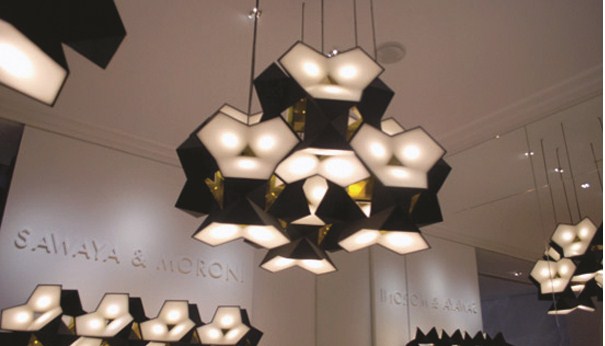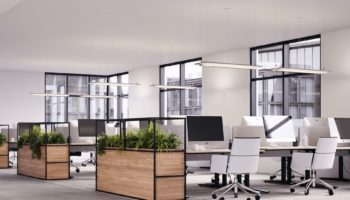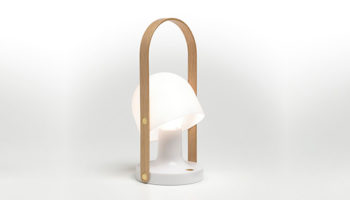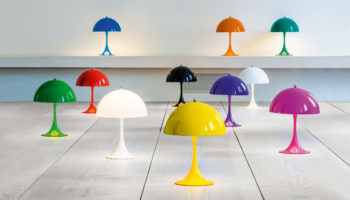Olafur Eliasson’s Starbrick
Olafur Eliasson’s Starbrick light module for Zumbotel is an intriguing addition to the exclusive roster of design innovation based on molecular configuration. Since that generalized statement may not signify much to those not in the know (and, of course, every shape is molecular in a sense, even rectangles and squares.) Perhaps some past examples will elucidate: the infamous Beijing Water Cube, based on the idea of the shared walls of soap bubbles is one; the polyhedric shapes of honeycombs.
Starbrick. Designed by Olafur Eliasson. Manufactured by Zumbotel.
Profiled on 3rings in The Beehouse Lamp and wall panels by Sing Homes and Bencore—is another. The basic idea is that we can observe the multiplying, self-aggregating phenomena we see in nature (and the beehive is the perfect example of this) and forthwith develop new theories and practices for building/assembling/designing.



Taking me back to high school chemistry, Eliasson’s Starbrick reminds me of the way silica crystals form. Or as he puts it, “in my studio, we initially focused on the spatial challenges involved in the shaping of a complex geometric brick. This led to the development of the star-shaped modules, based on a stackable principle, which produce three types of space: the solid structure of the module itself, the negative space at its core in the shape of a ‘cubeoctahedron,’ and the polyhedric spheres that appear between the modules when stacked.” Eliasson’s “three types of space” are essential to Starbrick’s functionality, since they enable what he calls a “politics of light,” or the play between ambient/functional, translucent/transparent, and opacity/revealed space.
The concept is exciting and new (and, for Zumbotel, still evolving), but Eliasson’s principal aim seems to be creating a new vernacular around the notion of building with light, not only in the “metaphorical” sense of how we emphasize surfaces with this medium, but also in the literal sense of stacking and supporting: “I have attempted to develop a module that, while functioning as an object in itself, can also be assembled to form multiple basic architectural elements such as walls, whether freestanding or integrated into an overall structure, suspended ceilings, columns of all shapes, sizes, and volumes.”
When one unpacks the mysterious exterior appearance of the module, a beautiful simplicity is revealed (as with much in nature). The “core” module is a cube decorated with six other cubes, each attached at a 45 degree angle. This assembly creates the star within the brick, while facilitating the even distribution of polycarbonate refractors that gives starbrick configurations their kaleidoscopic aspect. And, as Eliasson says, this kaleidoscope of color, light, and texture has multiple implications: “the expandable principle is a generous one that makes it possible for people to buy a lamp system that can be related to its surroundings. Depending on the context, you can change and rebuild the system; whether in a small study or a concert hall, the module can be used as an architectural building unit, merging light and volume. Theoretically, you could build an entire luminous house out of Starbricks!”
Via Architonic




Leave a Reply